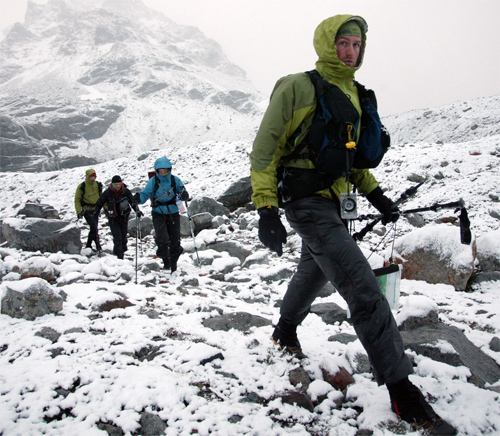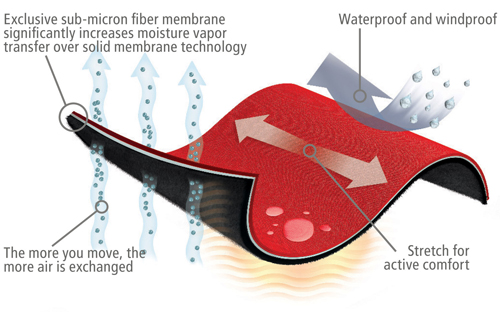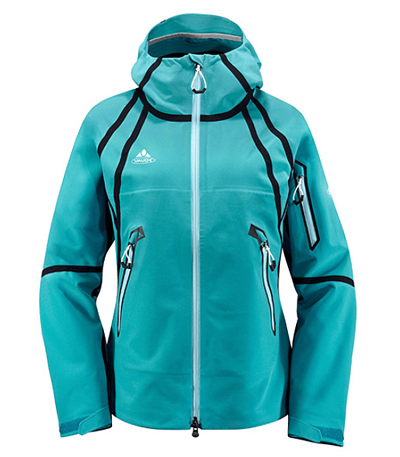It’s early winter, and it’s sleeting outside. But you want to go on a trail run. So you put on a layer — a wool or a synthetic base on top. Then it’s time for a jacket. Rainwear? Too clammy for a run. Softshell? No, it’ll soak through. Ah, yes, a hardshell jacket — a waterproof-breathable shell that will protect from the sleet and the sloppy skies, but will also wick your sweat from the inside as you run. Dry as a bone, from the inside and the out.
In a perfect world, the hardshell solution would be true. In our real world outdoors, the theory of the truly “waterproof-breathable” shell, which has been touted for decades, is often a half-truth at best. The waterproof side is bonafide. Breathable? Not so much.

To be sure, modern waterproof-breathable hardshells are far superior to rain slickers, windbreakers and their ilk. Hardshells are comfortable for many outdoors activities, including hiking, camping, and lift-serviced skiing. Hardshells are king when it’s cold and blowing, and they literally save lives on high mountains and in desolate places where the elements can kill. (Indeed, that is me in the back of the line in the photo above, a cold, snowy, iffy morning in the wilds of Patagonia last winter where hardshells saved the day.)
But when an active person’s aerobic levels spike, when you start to sweat inside your jacket, the current waterproof-breathable crop can rarely keep up.
When you talk waterproof-breathable, or “wp/b,” you’re talking about W. L. Gore & Associates Inc. and its eponymous GORE–TEX product, which employs a membrane of a compound called ePTFE (or “expanded polytetrafluoroethylene” if you want the lab-coat speak). But you’re also talking about eVent, a membrane from a subsidiary of General Electric Company popular on many jackets. Then there is Mountain Hardwear, Patagonia Inc., Columbia Sportswear Company, and probably a dozen more brands that have proprietary or private-label waterproof-breathable outerwear. The news this week, as highlighted further on, is that Polartec LLC is jumping into the wp/b game, too.

Beyond Gore and its polytetrafluoroethylene, the membranes are made from polyurethane, polyetheleyne, and other fancy compounds not often discussed outside a science lab. The secret sauce in each solution — the “membranes” — are thin sheets of microscopically-porous material. They have holes small enough to let air out — but not let a drop of water in. As long as your jacket’s seams are taped and the membrane is not damaged, a good hardshell jacket can stay watertight for years.








